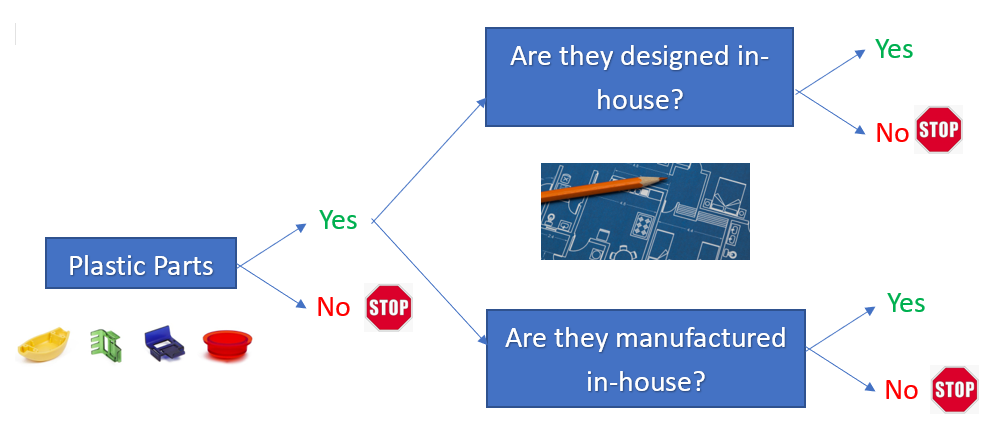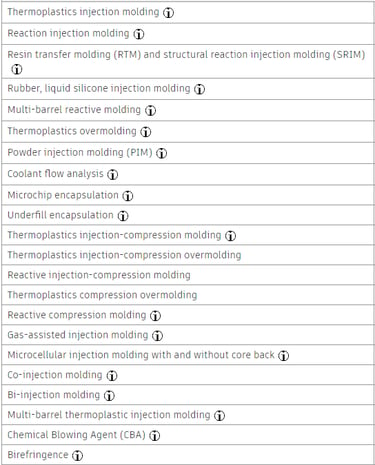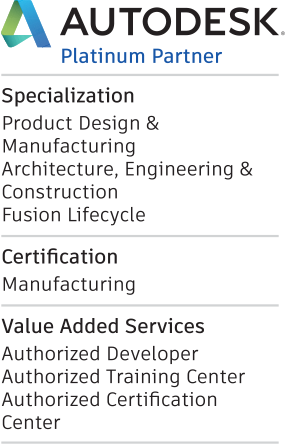Simulation is typically used to explore hidden elements of a process prior to manufacturing. Moldflow analysis is a specific tool used to simulate the injection molding cycle for a plastic component. Is Moldflow simulation right for you? This article will explain what needs to be answered to qualify your application. The two driving factors for choosing the appropriate simulation software are material and process.
The first question is the most obvious, does your product contain plastic? There is a wide range of plastic materials in today’s industries to choose from. Moldflow has one of the largest plastic material databases, including both thermoplastics and thermosets. The database continues to grow as the demand increases and more variations of resins are being developed. Whether or not your material is in the database, you can either manually create one or have the resin sent off to Autodesk for material characterization. As the industry pushes for light-weighting designs, more and more components are being changed to plastic. Designing and manufacturing plastic “parts to print” can be very challenging because of the hidden elements in the process.
That takes us to our next question. Are the plastic components designed or manufactured in-house? Moldflow simulation can be a very valuable tool for both designers and manufacturing engineers. It can help designers prevent quality issues caused by inconsistent wall thickness and reduce the mold costs by adding draft or removing undercuts. It can help manufacturing engineers design runner systems, cooling lines, ejection requirements, and optimize the process settings. The importance of getting Moldflow simulation into the hands of the engineers early on in a project phase can be substantial on cost savings because very expensive future errors can be prevented. Manufacturability, quality issues, and mold rework are just a few of those items.

That leads us to the final question. Is the plastic component manufactured using injection molding? Moldflow simulation is structured around injection molding, but also has the capability to evaluate compression molding. Below is a list of processes that Moldflow can simulate prior to plastic being shot. Moldflow allows analysts to efficiently create a mesh to address challenges such as part warpage, cooling channel efficiency, and cycle time. Design of experiments can be used to evaluate different setups to optimize the process. The advanced tools and simplified user interface can help companies fill the void between tribal knowledge and new product development.


If your company is designing or manufacturing plastic components for injection/compression molding, Moldflow simulation can drastically improve ROI by reducing the cost of error. In many cases, companies outsource the simulation service to the resin supplier, mold maker, OEM, or consultant. This is a very good alternative option for companies that produce low volumes or simply do not have the budget to purchase the software in-house. Note that there are a few downfalls to outsourcing simulation including long lead times, timing of the simulation (closer to production), and less internal communication. To achieve the full benefits of Moldflow, it should begin in the design phase and the results should be transferred through the workflow until the first production run. The benefit of this is to cut down on the cost of change requests because the sooner it is caught, the less of a cost multiplier it will have. There are many different routes to get Autodesk Moldflow simulation into your workflow. If you feel Moldflow could benefit your company or you have any question, feel free to reach out to D3 Technologies for assistance with qualifying the product. Below is a simplified list of the types of users that we have seen benefit from the use of Moldflow:
-Drafters and Engineers to assist with designing plastic components that are going to be injection molded.
-Manufacturing Engineers to help optimize the process.
-Analysts to evaluate the mesh and fine details of the process.
-Resin Supplies to prove out the benefits of switching materials.
-Mold Makers to effectively design the cooling and runner systems.
-OEM’s to help spec out the appropriate equipment.
-Consultants to communicate simulation results with clients.
Copyright (C) 2020 The Madison Group. All rights reserved.
Do you use any of these tips and tricks in your daily workflow? Feel free to brag about your success in the comments!
Like what you’ve read? Subscribe to our blog!
Feel free to share on Twitter or Facebook!







